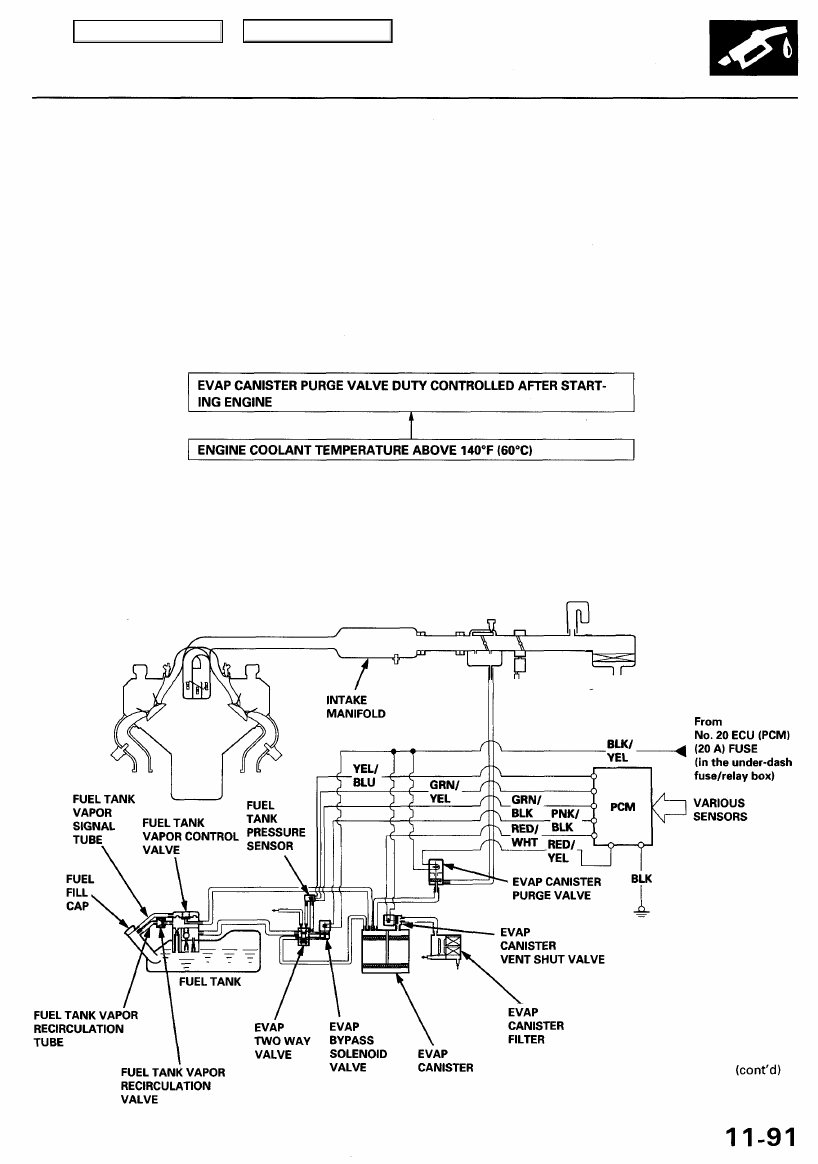Acura RL (1996-2004 year). Manual - part 277

Evaporative Emission (EVAP) Controls
Description
The evaporative emission controls are designed to minimize the amount of fuel vapor escaping to the atmosphere. The
system consists of the following components:
A. Evaporative Emission (EVAP) Canister
An EVAP canister is used for the temporary storage of fuel vapor until the fuel vapor can be purged from the EVAP
canister into the engine and burned.
B. Vapor Purge Control System
EVAP canister purging is accomplished by drawing fresh air through the EVAP canister and into a port on the throttle
body. The purging vacuum is controlled by the EVAP canister purge valve.
C. Fuel Tank Vapor Control System
When fuel vapor pressure in the fuel tank is higher than the set value of the EVAP two way valve, the valve opens and
regulates the flow of fuel vapor to the EVAP canister.
During refueling, the fuel tank vapor control valve opens with the pressure in the fuel tank, and feeds the fuel vapor to
the EVAP canister.
Main Menu
Table of Contents